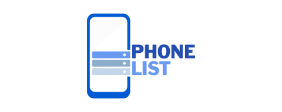In the world of e-commerce, product Format isimages are a critical factor influencing buyer decisions. High-quality photos that load quickly and look sharp across devices can significantly improve user experience and sales. Choosing the right file format for your edited e-commerce photos is essential to balance image quality, loading speed, and compatibility.
This article explores the most popular image file formats, their pros and cons, and guidance on selecting the best format for e-commerce photos.
Why File Format Matters for E-commerce Photos Format is
The file format determines how an image is compressed, its quality, file size, and how browsers and platforms display it. The wrong format can lead to slow-loading pages, pixelated images, or compatibility issues.
For e-commerce, the ideal file format should:
Preserve product details and colors accurately
Support transparent backgrounds if needed
Minimize file size for fast loading
Be widely supported by web browsers and platforms
Allow for easy editing or future modifications
Common Image File Formats Used in E-commerce
Let’s review the key formats used for edited product photos, highlighting their strengths and limitations.
1. JPEG (Joint Photographic Experts Group)
Overview:
JPEG is the most widely used image format for photographic images on the web. It uses lossy compression, which reduces file size by discarding some image data.
Pros:
Excellent compression for photographic images with rich color gradients
Small file sizes suitable for fast web loading
Universal browser and device compatibility
Supported by virtually all editing software
Cons:
Lossy compression can cause quality degradation, especially with repeated editing and saving
Doesn’t support transparency Format is
Compression artifacts may appear around e-commerce photo editing edges or in uniform color areas if over-compressed
Best Use Cases:
Product photos with complex colors and textures (clothing, electronics, cosmetics)
When transparent backgrounds are not required
2. PNG (Portable Network Graphics)
Overview:
PNG is a lossless compression format that preserves all image data without quality loss. It supports transparency.
Pros:
Lossless compression means high image quality with sharp edges
Supports transparency and alpha channels for background removal
Ideal for images with text, logos, or flat colors
Widely supported across browsers
Cons:
Larger file sizes compared to JPEG, which can slow down page loading
Not ideal for photographic how to save time and money with photo editing services images due to larger file size
Best Use Cases:
Images with text, logos, or graphics needing crisp edges Format is
3. WebP
Overview:
Developed by Google, WebP is a modern image format that offers both lossy and lossless compression. It supports transparency like PNG but with smaller file sizes.
Pros:
Superior compression compared to JPEG and PNG, reducing file size by 25-35% without sacrificing quality
Supports both lossy and lossless business sale lead compression
Supports transparency and animation
Increasingly supported by modern browsers and mobile devices
Cons:
Not universally supported by older browsers (e.g., some versions of Internet Explorer and Safari, though support is improving)
Editing software support is less widespread but growing
Best Use Cases:
High-quality photographic images needing transparency or animation
Sites aiming for the fastest load times with modern browser support
4. TIFF (Tagged Image File Format)
Overview:
TIFF is a lossless, high-quality format primarily used in professional photography and print.
Pros:
Maintains the highest quality with no compression loss
Supports transparency and layers
Cons:
Very large file sizes unsuitable for web use
Slow loading times
Not commonly supported in web browsers
Best Use Cases:
Source images for editing and archiving
Not recommended for e-commerce web use
5. SVG (Scalable Vector Graphics)
Overview:
SVG is a vector-based format ideal for graphics, logos, icons, and UI elements rather than photographic images.
Pros:
Scales infinitely without loss of quality
Small file sizes for simple graphics
Editable with code and graphic software
Cons:
Not suitable for photographic product images
Cannot represent complex textures or colors realistically
Best Use Cases:
Logos, icons, UI graphics on e-commerce sites, but not for product photos
Key Factors to Consider When Choosing a Format for Edited E-commerce Photos
Image Quality vs. File Size
Balancing quality and file size is crucial. Heavy, uncompressed images slow down loading, hurting user experience and SEO. JPEG and WebP are excellent for photos because they reduce file size substantially while maintaining good quality.
Transparency Needs
If your product images require transparent backgrounds—for example, overlaying on different colored backgrounds—PNG or WebP with transparency support are preferred.
Browser Compatibility
JPEG and PNG are universally supported. WebP support has grown rapidly in recent years and is now compatible with most modern browsers like Chrome, Firefox, Edge, and Safari (recent versions). For maximum compatibility, many sites provide fallback JPEG or PNG versions alongside WebP.
Editing and Future Modifications
If you anticipate ongoing edits, keep an uncompressed or lossless master file (e.g., TIFF or PSD). For web delivery, convert to JPEG, PNG, or WebP after final edits.
Recommended Approach for E-commerce Photos
Use a Combination Strategy:
JPEG for most product photos: Use high-quality JPEGs (quality setting between 70-85%) to balance quality and file size for typical photographic images. This works well for fashion, electronics, beauty products, and more.
PNG for images requiring transparency: Use PNG when transparent backgrounds are necessary, such as for logos, accessories, or complex cutouts.
WebP for optimized delivery: Serve WebP versions to browsers that support it to reduce load times while maintaining quality. Provide JPEG or PNG fallbacks for unsupported browsers.
Keep source files lossless: Maintain original edited images in PSD, TIFF, or another lossless format for future edits.
Tools to Optimize and Convert Formats
Several tools and platforms can help optimize e-commerce images:
Adobe Photoshop: Save for Web feature allows export to JPEG, PNG, and WebP (with plugins).
TinyPNG / TinyJPG: Online compressors that reduce PNG and JPEG sizes effectively.
ImageMagick: Command-line tool for batch conversions and optimizations.
Cloudinary / Imgix: Cloud services that dynamically optimize and serve images in the best format for each user’s device and browser.
Squoosh: Browser-based tool by Google that supports various formats and compression levels.
Final Thoughts
Choosing the best file format for edited e-commerce photos is essential for achieving a fast, visually appealing online store. The ideal choice depends on your product type, image content, and user experience priorities.
JPEG remains the workhorse for photographic images due to its balance of quality and compression.

